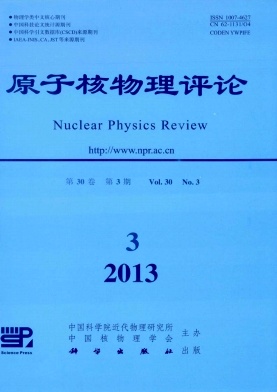Quasifission in Heavy Ion Fusing Reaction Systems
doi: 10.11804/NuclPhysRev.30.03.299
- Received Date: 1900-01-01
- Rev Recd Date: 1900-01-01
- Publish Date: 2013-09-20
-
Key words:
- superheavy nucleus /
- quasifission /
- fusion /
- master equation /
- driving potential
Abstract: In heavy ion fusion reactions, the quasifission(QF) is competing with fusion, and which is often described by incorporating the Kramers formula(KRA-F) into the master equation(ME) within the Di-Nuclear System(DNS) model. However the KRA-F works well only if the QF barrier is high enough. Presently by taking
the relative distance of nuclei as an independent dynamical variable, the evolution of the DNS towards fusion and QF are both treated as a diffusion process in a consistent way by solving MEs. The validity of the KRA-F is thus
checked. Furthermore, the dynamical deformation and the nucleon transfer in heavy ion fusion reaction process are viewed simultaneously as a diffusion process, and are treated by solving a set of MEs with the variables of the
quadrupole deformation of each nucleus and the mass asymmetry variable in the potential energy surface(PES) of the system. The distinct influence of the dynamical deformation on the QF mass yield distribution is discussed,and the experimental observations can be well reproduced by the calculation.
| Citation: | YU Lin, GAN Zaiguo, HUANG Minghui, ZHANG Hongfei, LI Junqing. Quasifission in Heavy Ion Fusing Reaction Systems[J]. Nuclear Physics Review, 2013, 30(3): 299-307. doi: 10.11804/NuclPhysRev.30.03.299 |






 甘公网安备 62010202000723号
甘公网安备 62010202000723号 DownLoad:
DownLoad: